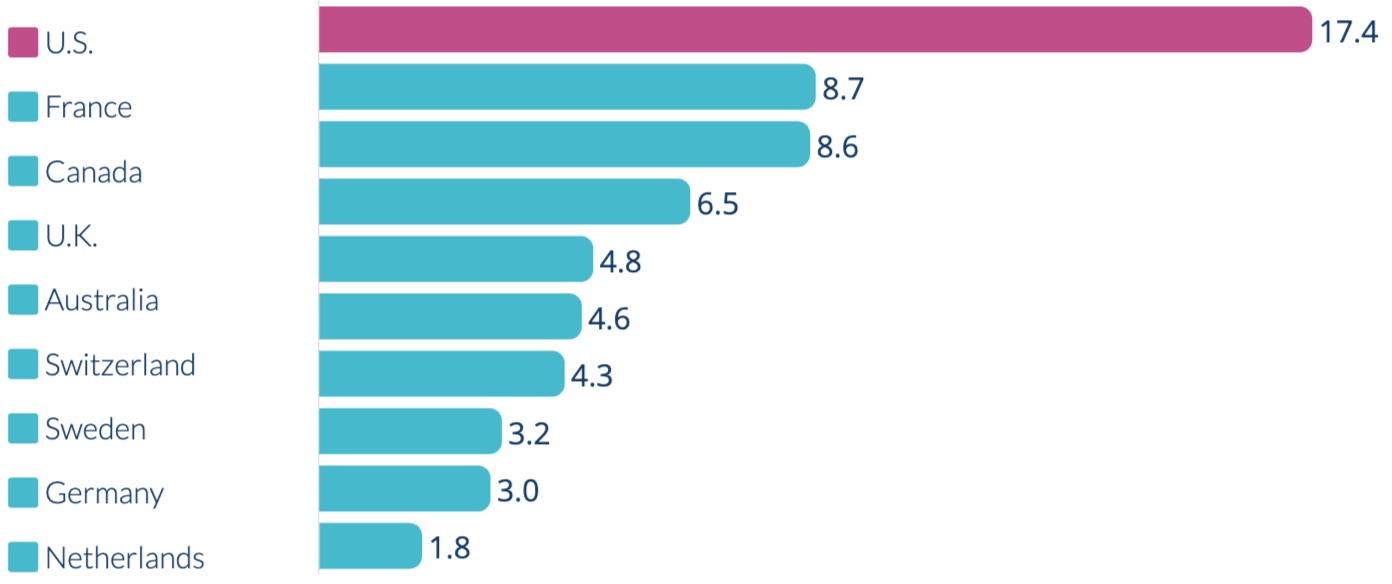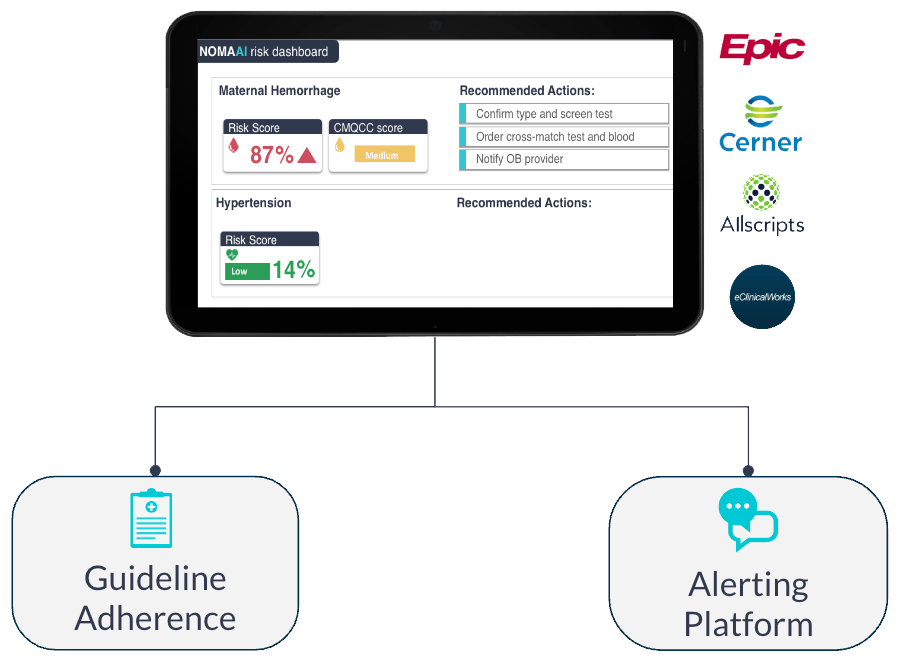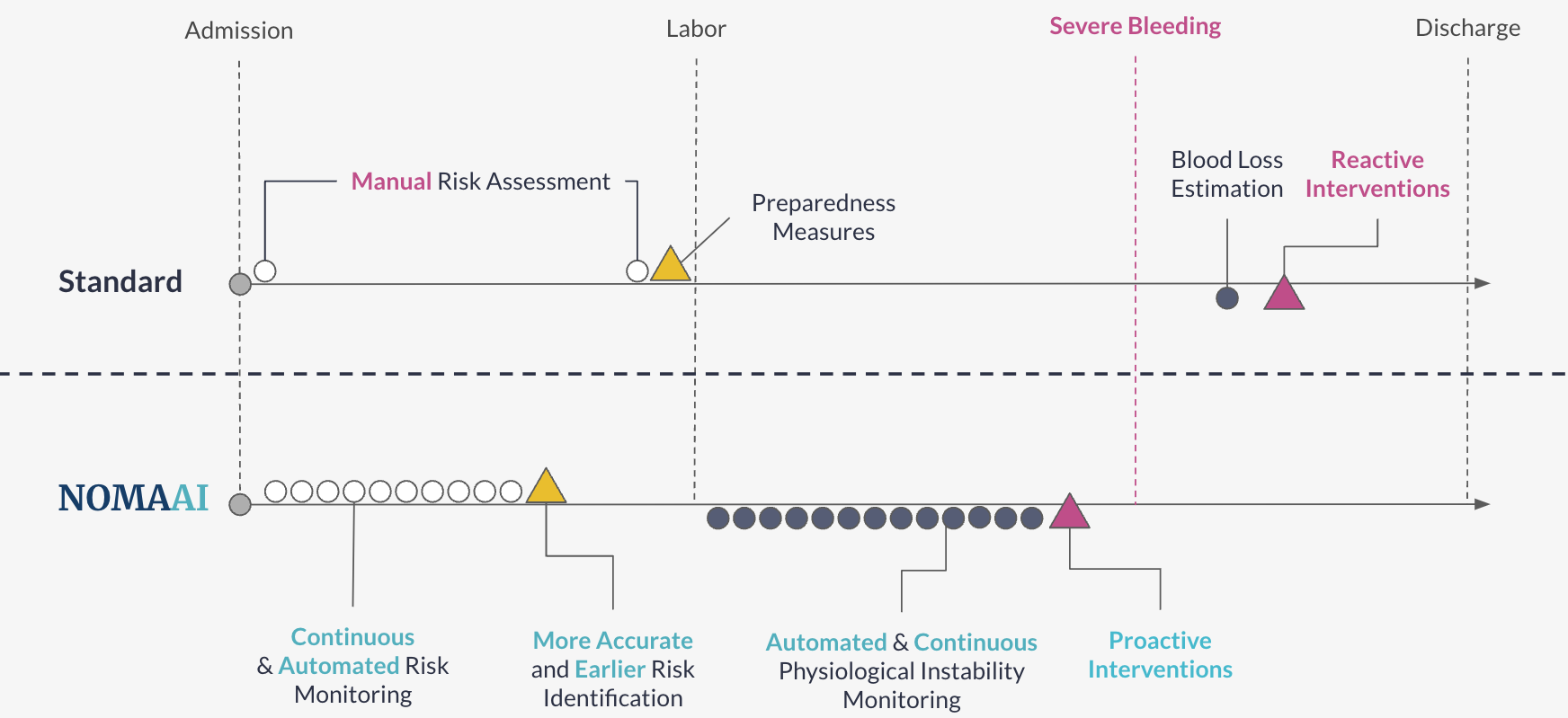Maternal Hemorrhage
Maternal mortality is a massive global health problem. Every year more than 14 million women experience maternal hemorrhage resulting in 70,000 deaths globally accounting for 27% of all maternal death. In the U.S. Maternal hemorrhage continues to remain the number one reason for maternal mortality after mental health issues according to the most recent report by Centers for Disease Control and Prevention (CDC) in 2022. In the U.S. from the 4 million mothers admitted for childbirth in the United States each year, 1 in 20 mothers will experience bleeding. This health burden falls disproportionately on black and native women.
The lack of accurate and proactive risk assessment and detection solutions is a major unmet need in preventing maternal hemorrhage. The existing early risk assessment tools, widely adopted across the U.S., are manual and paperbased and misidentify nearly 50% of maternal hemorrhage patients as low risk resulting in grossly under-preparedness. Additionally, the most common method for the detection of excessive bleeding continues to be visual estimation of blood loss which can lead to significant underestimations and late interventions.
1 in 20
Patients Experience Medical Complications
$2.5B
Financial Cost to Hospitals

Maternal Mortality Rate
Maternal mortality rates are highest in the U.S. compared to other developed countries and they have been on the rise in the recent years.

Disparities in Maternal Health Outcomes
Today, in the US, African-American and other minority mothers face a 3-5 times higher risk of maternal mortality.
Existing Solutions Are in Adequate
The lack of accurate and proactive risk assessment and detection solutions is a major unmet need in preventing maternal hemorrhage. The existing early risk assessment tools, widely adopted across the U.S. due to the 2021 joint commission mandates, misidentify nearly 50% of hemorrhage patients as low risk resulting in grossly under-preparedness. Additionally, the most common method for the detection of excessive bleeding continues to be visual estimation of blood loss which can lead to significant underestimations and late interventions.

The Solution
NOMA AI is developing AI algorithms for predictive monitoring and recognition of maternal hemorrhage. First and aligning with existing mandates for maternal hemorrhage risk assessment, we are addressing early risk assessment of maternal hemorrhage through real-time integration with hospital electronic health records. Starting from admission, patients' medical history, risk factors, vital signs and other clinical data will be extracted and processed by NOMA's proprietary AI platform to predict the risk of maternal hemorrhage and provide that information within existing clinical softwares and workflows. In Phase II, NOMA will address the recognition of ongoing severe bleeding by combining patients' medical records with biosensor data allowing clinicians to intervene before a patient has experienced severe bleeding for the first time.

Enabling Proactive Maternal Hemorrhage Management
NOMA AI's maternal hemorrhage monitoring solutions offers both more accurate and earlier identification of risk and proactive recognition of severe bleeding or risk of physiological instability resulting from excessive bleeding, therefore, facilitating higher levels of preparedness and earlier proactive intervention.
